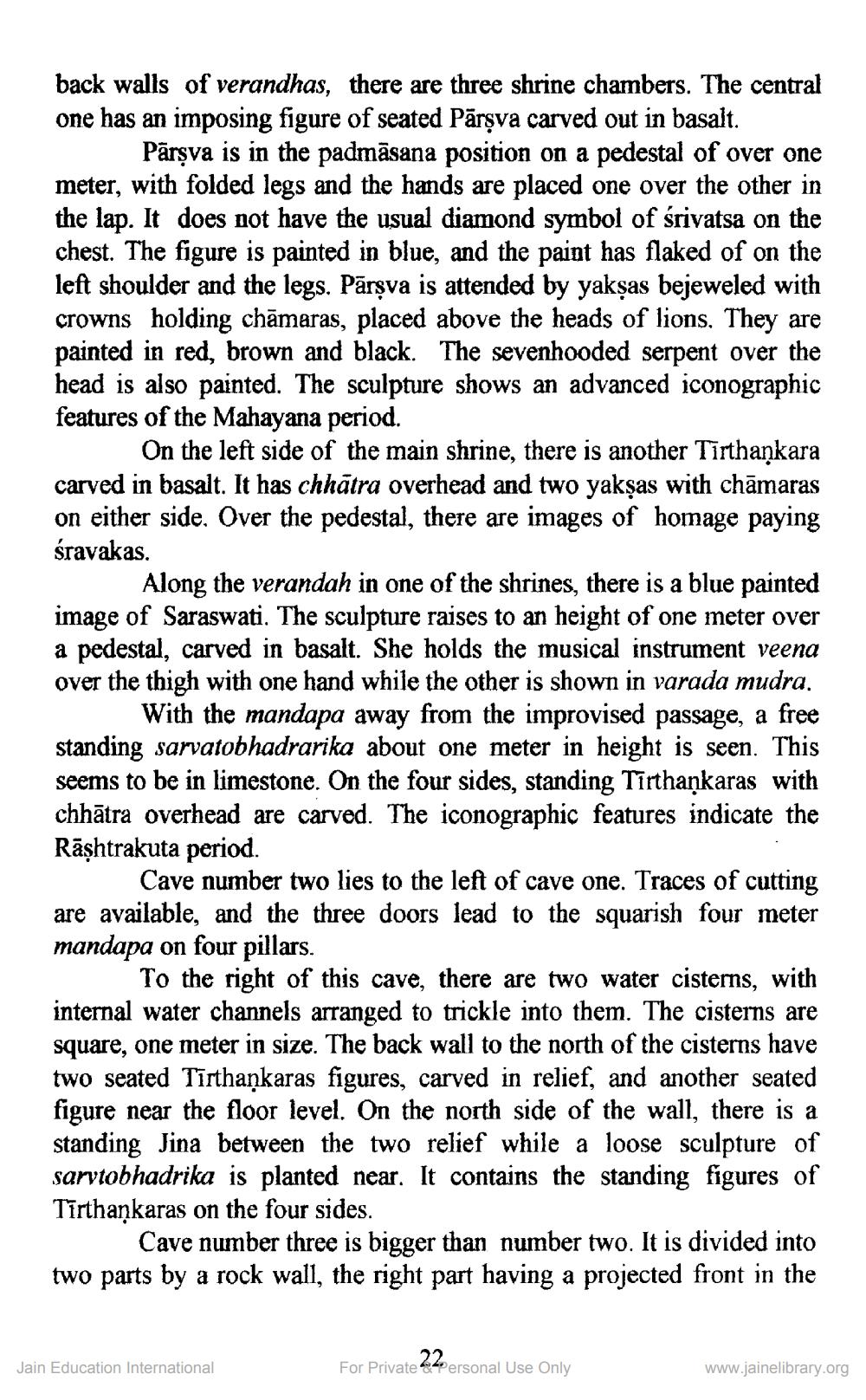________________
back walls of verandhas, there are three shrine chambers. The central one has an imposing figure of seated Pārsva carved out in basalt.
Pārsva is in the padmāsana position on a pedestal of over one meter, with folded legs and the hands are placed one over the other in the lap. It does not have the usual diamond symbol of srivatsa on the chest. The figure is painted in blue, and the paint has flaked of on the left shoulder and the legs. Pārsva is attended by yakşas bejeweled with crowns holding chāmaras, placed above the heads of lions. They are painted in red, brown and black. The sevenhooded serpent over the head is also painted. The sculpture shows an advanced iconographic features of the Mahayana period.
On the left side of the main shrine, there is another Tirthankara carved in basalt. It has chhātra overhead and two yakşas with chāmaras on either side. Over the pedestal, there are images of homage paying śravakas.
Along the verandah in one of the shrines, there is a blue painted image of Saraswati. The sculpture raises to an height of one meter over a pedestal, carved in basalt. She holds the musical instrument veena over the thigh with one hand while the other is shown in varada mudra.
With the mandapa away from the improvised passage, a free standing sarvatobhadrarika about one meter in height is seen. This seems to be in limestone. On the four sides, standing Tirthaņkaras with chhātra overhead are carved. The iconographic features indicate the Rāşhtrakuta period.
Cave number two lies to the left of cave one. Traces of cutting are available, and the three doors lead to the squarish four meter mandapa on four pillars.
To the right of this cave, there are two water cisterns, with internal water channels arranged to trickle into them. The cisterns are square, one meter in size. The back wall to the north of the cisterns have two seated Tīrthaņkaras figures, carved in relief, and another seated figure near the floor level. On the north side of the wall, there is a standing Jina between the two relief while a loose sculpture of sarvtobhadrika is planted near. It contains the standing figures of Tīrthankaras on the four sides.
Cave number three is bigger than number two. It is divided into two parts by a rock wall, the right part having a projected front in the
Jain Education International
For Private 24-ersonal Use Only
www.jainelibrary.org




